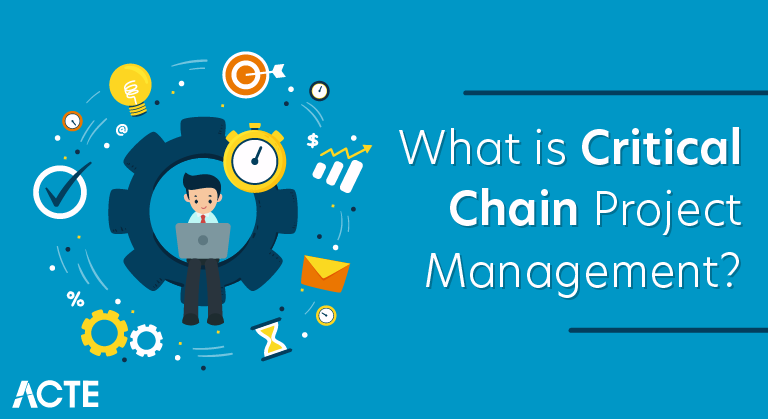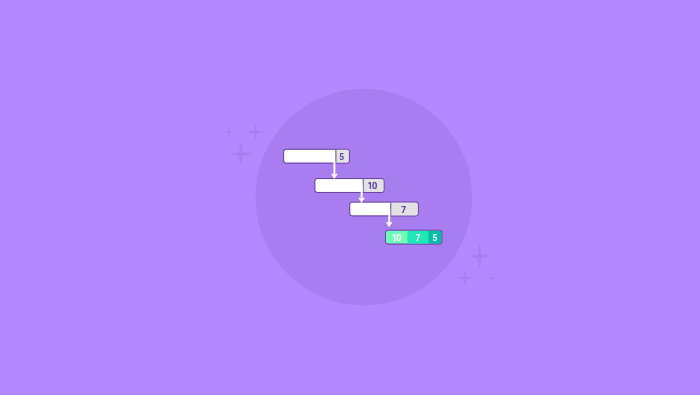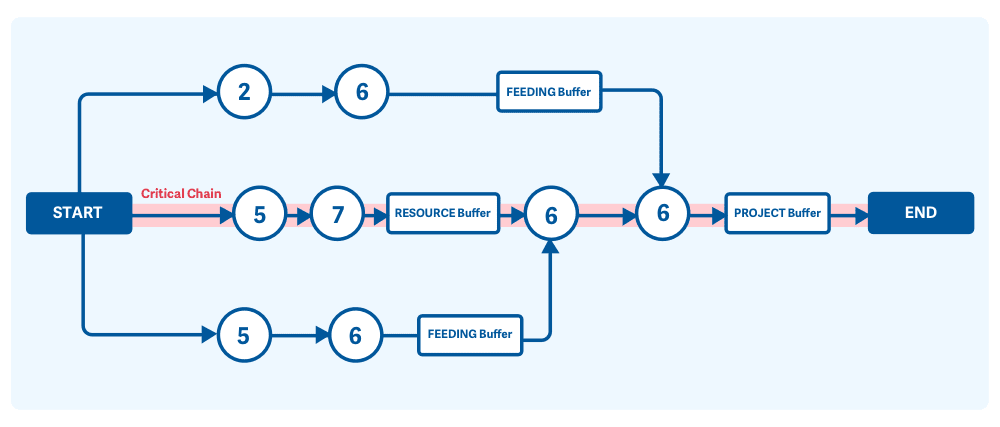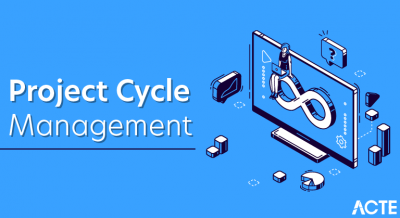

Critical Chain Project Management is a schedule network analysis technique that takes into account task dependencies, limited resources availability (people, equipment, physical space), and buffers necessary to successfully complete the project. CCPM allows a project manager to plan and manage project’s schedule by concentrating on resources used in Critical Path (also known as the Critical Chain).
The origin of Critical Chain
Critical Chain Project Management was developed by Dr. Eliyahu M. Goldratt in 1997 as a response to inability to complete tasks on time and within budget. Dr. Goldratt first introduced the method in his work on Theory of Constraints (TOC), which focuses on identifying and fixing bottlenecks in order to improve the entire workflow.
Why we need CCPM?
- Traditional project management is based on predictable experience and predictable tools. But, as much as we would like to be able to control every single aspect on a project, we can’t. In traditional project management, a lot of time is spent on making accurate time estimates and reduce risks, which delays projects.
- Critical Path Method isn’t very helpful either because it’s based on the idea that all the resources will be available at any given time, which is not always the case. Also, according to Critical Path Method, if any activity is delayed, the delay will pass on to the next activity and delay the entire project.
- Unlike other techniques, Critical Chain Optimization (a huge part of CCPM) helps us determine which time estimates we can shorten and it allows us to evenly distribute workload thanks to flexible start times. Finally, Critical Chain Optimization ensures we don’t need safety margin and all tasks are completed ahead of schedule.
What is Critical Chain Project Management (CCPM)?
Critical Chain is the longest path in the network diagram that takes into consideration task dependency and resource availability. It’s a modified form of Critical Path Method where project activities use aggressive time and have access to unlimited resources.
While Critical Path Method uses Float, CCPM uses buffers as strategic points that eliminate uncertainty around projects.
There are four types of buffers:
Project Buffer – protects the project from missing its scheduled end date and keeps the completion date unchanged. It is inserted at the end of the project network diagram, between the last task and the completion date. It protects project completion date, which might vary due to the changes in activity durations in the critical chain. In other words, the size of the project buffer depends on the activities in the critical chain.
Feeding Buffer – is inserted between the last task on a non-critical chain and the critical chain. These buffers are typically added to a non-critical chain so that any delays on a non-critical chain don’t affect the critical chain.
Resource Buffer – these are set on the Critical Chain to ensure appropriate resources (people, equipment) are available throughout the project when needed. These resources are commonly known as Critical Resources.
Capacity Buffer – it sets on-call resources necessary in case unforeseen budget issues arise .

The specific steps in CCPM
There 9 steps you need to do in the CCPM process:
- Reduce all time estimates by 50% (the protection that is cut is inserted as a buffer in the project)
- Level the project plan and remove resource retentions (in this phase, a critical path is transformed into critical chain).
- Add a portion of reduced task estimates into the Project Buffer and insert it at the end of the project
- Insert Feeding Buffers at points where non-critical chain path meets critical chain path
- Protect the Critical Chain from unavailable resources by placing Resource Buffers where appropriate
- Insert Capacity Buffers where needed
- Schedule tasks as late as possible (this will help you prevent multitasking)
- Encourage aggressive task completion time and emphasize the importance of start time to complete the tasks as quickly as possible
- Manage buffers and gain information necessary for controlling the plan and taking recovery actions if needed
Here’s a real world example of CCPM in action. Let’s say you’re building something. You created a plan and built a schedule based on the critical path. Although you have given enough thought to each project stage and started working on it, you suddenly realize there isn’t enough equipment nor people to complete the project on time.
To prevent the project from failing, you consider resource allocation into your project plan and modify the critical path. Essentially, you change the critical path into a critical chain and this way you create a much more realistic schedule.
What are the benefits of CCPM
Although CCPM is mainly used in multi-project environments that require a lot of resources, you can apply it on your projects regardless of whether you are running a small company or a big corporation.
CCPM is probably one of the most practical and the most important project management technique because of a number of benefits it offers:
- It allows people to become more focused on their tasks, thus increasing team productivity and efficiency
- It helps your team overcome the Student Syndrome phenomena (when people start working more as the deadline starts approaching)
- It avoids mismanagement of floats
- It considers the minimal time needed to complete the project
- It accelerates project completion
- It make significant reduction in capital requirements





